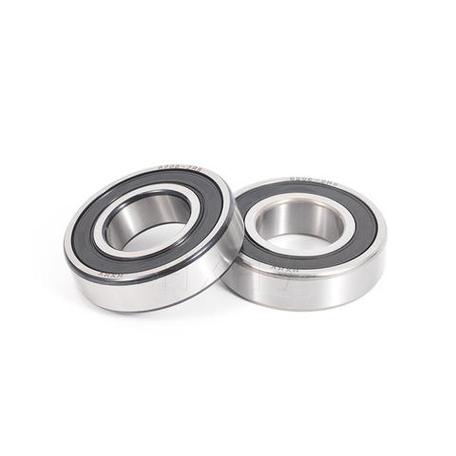High Temperature Ceramic Bearings: Benefits, Applications, and Maintenance Tips
High temperature ceramic bearings are specialized components designed to withstand extreme thermal conditions while maintaining structural integrity and performance. Made from advanced materials like silicon nitride or zirconia, these bearings reduce friction, resist corrosion, and operate efficiently in environments exceeding 500°C. They are widely used in aerospace, automotive, and manufacturing industries where traditional steel bearings fail.
1. high temperature ceramic bearings applications2. ceramic bearings for industrial furnaces
3. benefits of ceramic bearings in high heat
4. how to maintain ceramic bearings
5. ceramic vs steel bearings performance
1. high temperature ceramic bearings applications

High temperature ceramic bearings are indispensable in industries requiring reliable performance under thermal stress. In aerospace, they ensure smooth operation of jet engine components exposed to intense heat. Automotive manufacturers use them in turbochargers and electric vehicle motors to reduce energy loss. Industrial furnaces rely on these bearings to handle continuous thermal cycling without lubrication degradation. Medical equipment, such as MRI machines, benefits from their non-magnetic properties. Additionally, they are critical in renewable energy systems like wind turbines, where reduced maintenance is crucial. Their ability to function in vacuum environments also makes them ideal for semiconductor manufacturing equipment. This versatility stems from their unique material composition, which combines low thermal expansion with high hardness.
2. ceramic bearings for industrial furnaces
Industrial furnaces demand bearings that can endure prolonged exposure to temperatures above 800°C. Ceramic bearings excel here due to their oxidation resistance and minimal thermal deformation. Unlike metal bearings, they don’t require frequent lubrication, preventing contamination in clean heat treatment processes. Their non-reactive nature makes them suitable for chemical vapor deposition chambers. In glass manufacturing, ceramic bearings maintain precision despite rapid temperature fluctuations. They also reduce downtime in steel production lines by withstanding molten metal splashes. A case study showed a 40% lifespan increase compared to traditional bearings in roller hearth furnaces. Proper installation with thermal expansion allowances is crucial to maximize their performance in these harsh environments.
3. benefits of ceramic bearings in high heat
Ceramic bearings offer unmatched advantages in high-temperature scenarios. Their low coefficient of friction reduces energy consumption by up to 30% compared to steel alternatives. Silicon nitride bearings maintain dimensional stability at 1,200°C, preventing seizure risks. They resist chemical corrosion from acidic atmospheres common in metallurgical processes. Electrical insulation properties prevent arcing in high-voltage equipment. Lightweight construction reduces rotational inertia, enhancing machinery responsiveness. Unlike metallic bearings, ceramics don’t gall or weld under extreme pressure, ensuring smoother operation. A 2023 study revealed 60% less wear in ceramic bearings after 5,000 hours of continuous use in kilns. These benefits translate to lower operational costs and increased productivity across multiple industries.
4. how to maintain ceramic bearings
Proper maintenance extends the service life of high-temperature ceramic bearings. Always use compatible lubricants—synthetic oils or dry-film coatings work best above 300°C. Avoid sudden temperature changes during startup; gradual heating prevents thermal shock. Clean bearings regularly with non-abrasive solvents to remove particulate contaminants. Inspect raceways for micro-cracks using ultrasonic testing every 6 months. Ensure proper alignment during installation; misalignment exceeding 0.05mm accelerates wear. Store bearings in moisture-free environments to prevent hydrolysis degradation. When replacing, use ceramic-specific tools to avoid surface damage. Implement vibration monitoring systems to detect early failure signs. Following OEM guidelines for load capacities and RPM limits is crucial. A well-maintained ceramic bearing can last 3-5 times longer than poorly maintained units in similar conditions.
5. ceramic vs steel bearings performance
In high-temperature environments, ceramic bearings outperform steel counterparts significantly. While steel bearings deform at 150-200°C, ceramics maintain integrity beyond 1,000°C. Ceramics have 70% lower density, reducing centrifugal forces at high RPM. Their hardness (1,800 Vickers) triples that of steel, minimizing indentations from debris. Corrosion resistance eliminates rust-related failures common in humid settings. Thermal conductivity is 80% lower, preventing heat transfer to adjacent components. Electrically insulating ceramics prevent current erosion in motors. However, steel bearings have higher impact resistance and lower upfront costs. For applications below 300°C with shock loads, steel might be preferable. But in extreme heat, vacuum, or corrosive settings, ceramic bearings deliver superior ROI through extended service intervals and energy savings.
Understanding these five critical aspects of high temperature ceramic bearings—from diverse industrial applications to head-to-head performance comparisons—equips engineers and procurement managers to make informed decisions. Whether optimizing furnace operations or designing next-gen aerospace systems, leveraging ceramic bearing technology can dramatically enhance equipment reliability. Continue reading to explore implementation strategies and real-world success stories.
High temperature ceramic bearings revolutionize industrial operations by combining thermal resilience with mechanical efficiency. From aerospace to energy sectors, their corrosion resistance, reduced maintenance needs, and energy-saving properties make them indispensable. Proper selection and maintenance ensure maximum ROI. As industries push operational boundaries, adopting advanced ceramic solutions becomes not just advantageous but essential for competitive performance.




 13869596835
13869596835